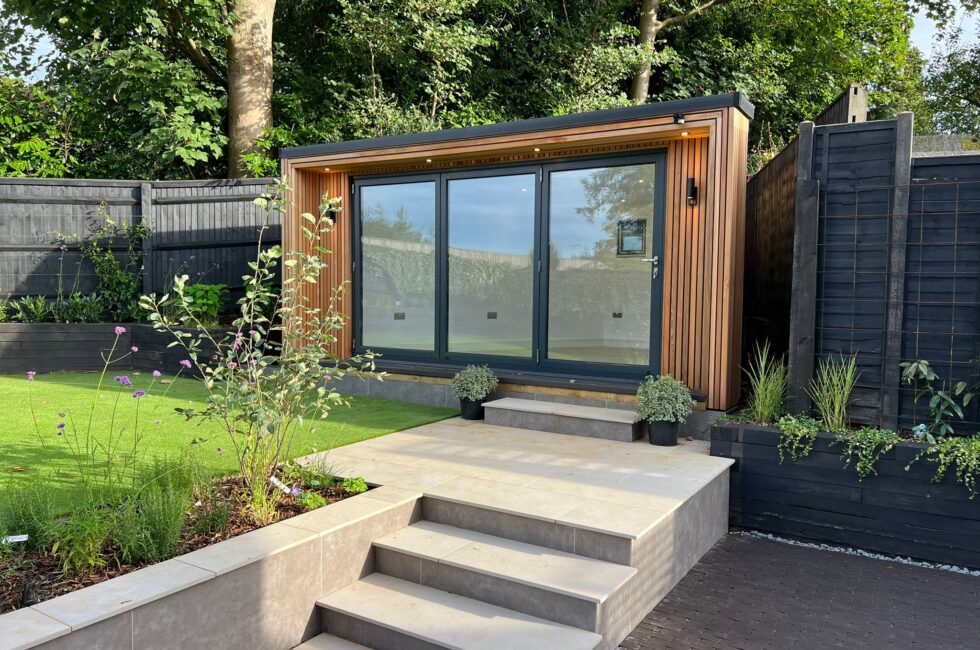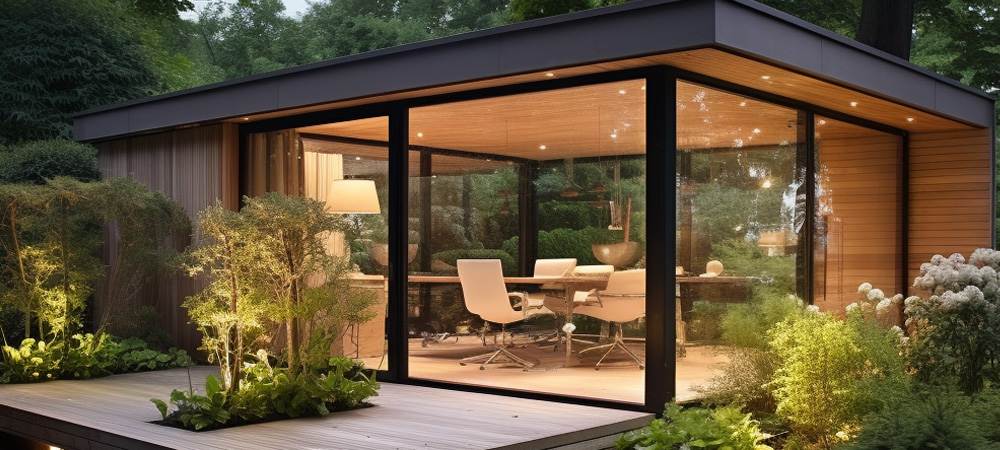Top Reasons On Planning Permission For Garden Offices
Top Reasons On Planning Permission For Garden Offices
Blog Article
What Planning Permission Do You Need For Gardens, Etc. In Terms Of Size Restrictions?
Size restrictions on specific areas are commonly utilized to determine if you require planning permission when building gardens, conservatories, or outhouses. Here's the criteria for size that could require you to seek planning permission.
If the outbuilding is detached, permission to plan is usually required in the event that the size of all outbuildings that are proposed, as well as any other structures already in place over half the size of land that surrounds the house (excluding footprint of the house).
Height Restrictions
Single-story structures: The maximum eaves height should not exceed 2.5 meters. The total height must not exceed 4 meters for the roof with a dual pitched design or 3 meters for other type of roof.
The maximum height of buildings within 2 meters is 2.5 meters.
Floor Area:
Building regulations may be required for buildings with more floor space over 30 square metres even if planning permission is not needed.
Proximity to boundaries
If the structure is not more than 2 meters away from a boundary, a planning permit is required if the structure's height exceeds 2.5 metres.
Building Usage
The size of gardens isn't the only thing to consider, their intended use can influence whether planning permission is needed. For instance, if the structure is intended to be used for housing or as a commercial space the planning permission is more likely to be needed.
Permitted Development Rights:
Permitted Development Rights Permitted Development Rights are subject to particular conditions and sizes. These rights differ based on the property's type and whether it is in a conservation area and/or subject to other limitations.
Extensions and conservatories:
For a rear single-story addition the maximum height is 3 meters or 4 meters depending on the type of house, whether semi-detached or a terraced residence. The depth can be increased to 8 meters for detached houses and 6 feet for semi-detached and terraced homes, based on the circumstances.
The maximum height of an extension to the rear with a single story is 4 metres.
Side Extensions
For side extensions, the width cannot be greater than half the width of the home's original and the height must not exceed 4 meters.
Volume Restrictions
In certain areas (such as conservation areas or Areas of Outstanding Natural Beauty), an additional building which increases the size of the house by more than 10 percent or 50 cubic meters (whichever is larger) could require planning permission.
Front Extenders
Planning permission will be required for any extensions that go over the front of the home.
It's essential to verify with the local authorities, as regulations can vary depending on where you live and the conditions on the property. It's important to check with your local planning authority, since rules may differ based on the council and specific properties' conditions. See the top composite garden office for more advice including garden rooms near me, what size garden room without planning permission uk, herts garden rooms, insulated garden buildings, costco garden room, herts garden rooms, luxury outhouse, outhouse, out house, costco outbuildings and more.
What Planning Permission Is Required For Gardens, Rooms Etc. In Terms Of Neighbourhood Concerns?
Planning permission might be required for garden rooms, conservatories or outhouses. There are two important aspects to consider: Overlooking and privacy:
Planning permits are required if a new building may result in a loss of privacy by overlooking adjacent properties. This will ensure that the construction doesn't adversely impact the lives of the residents in the area.
Overshadowing or Loss of light:
Planning permission is required when the proposed development could result in an overshadowing effect or a decrease in light from a adjacent properties. Local planning authorities will evaluate the effect of sunlight and daylight on homes adjacent to it.
Disturbance and Noise
If the garden area or extension is going to be used for activities that generate noise (such as an office at home with guests, a workshop, or a music room) the planning permits are required. This will ensure that noise levels are not too loud and don't disturb your neighbors.
Visual Impact and Character
The appearance, design and the size of the new structure must be in line with the neighborhood's style. Planning permission ensures aesthetic appeal and ensures that the building doesn't damage the aesthetics in the neighborhood.
Boundary Proximity
If the structures are taller than 2.5 meters and are less than 2 meters from the property line, then planning permission is required. This is to stop conflict and negative effects on neighbouring properties.
Shared Access Rights and Rights of Way
The planning permission is needed if the construction could impact shared access points or rights of ways. This will ensure that they do not get hindered or blocked.
Rejections from neighbors:
Neighborhood consultation on planning requests is allowed. If there are objections from neighbors, the authority for planning will take into account the concerns of neighbors when deciding whether to grant permission.
Impact on property values
Though not the only factor the changes that alter the value of homes near by may influence the need for a planning permit. Local authorities will be considering the effect on property values of these modifications when making their decision.
Covenants and Deed Restrictions
The property may have covenants or deed limitations which must be adhered to regardless of planning permission. These agreements may limit what can be built, which could impact the peace of the neighborhood.
Construction Disturbance:
The planning permit can be used to address concerns about disturbances that may be experienced during construction such as dust and noise. It is possible that you will need to establish conditions for the benefit of your neighbors.
Infrastructure Impact:
If the new structure puts an additional burden on the local infrastructure (e.g. drainage, parking, and roads) Planning permits will ensure that the impacts are evaluated and managed appropriately.
Consultation with the Community
A wider consultation with the community may be needed in certain instances particularly in the case of large or controversial developments. This facilitates a more democratized process of decision-making, which considers local opinions.
In the end, concerns regarding the neighborhood are important in deciding if an extension, garden room or outhouse, garden office or extension is allowed. It is crucial to ensure that the development does not negatively impact the quality of life in the neighborhood as well as privacy levels as well as sound, light or the overall appearance. A consultation with local planners and early interaction with neighbors can help to alleviate these concerns. View the top rated garden room permitted development for more tips including insulated garden rooms, garden rooms brookmans park, outhouse uk, composite garden office, outhouse garden, outhouse garden, outhouse garden, garden rooms in St Albans, composite garden rooms, best heater for log cabin and more.
What Planning Permit Are You Required To Get For Your Garden Rooms, Etc.?
Do you plan to build a garden office, conservatories or outhouses? The style and design of the building will play a major factor in determining if planning permission is necessary. Here are key considerations.
Planning permission is not needed if your proposed structure is within the permitted development rights of your property. There are specific aesthetic and design requirements to be fulfilled.
Size and scale:
The new structure should be in proportion to the land and adjoining structures. Buildings that are bigger than the limits set out in permitted development rights require approval for planning.
Height and massing
The height of the new structure and its mass should be consistent with surrounding structures and the property. Planning permission is typically needed for buildings that go over the limits of height or are out of scale with the surrounding area.
Materials and finishes
The choice of material and finishes should be in harmony with existing structures and properties surrounding the area. The materials chosen may need to be approved by the authority responsible for planning when they do not fit in with the style with the buildings around them.
Design Harmony
The style and design of the building must match the architecture of the structure already in place. The style of the new structure should be in harmony with the local features and aesthetics.
Design of the Roof
The style of the roof should be in harmony with both the existing architecture and that of surrounding buildings. If the design proposed for the roof is out of style with the surrounding landscape the planning permission might be needed.
Fenestration (Windows and Doors)
The design, placement and the size of the windows and doors should be compatible with the design of your current structure and the surrounding structures. The proposed fenestration might require a planning permit if it does not match the local architectural style.
Facade Treatment:
The facade's treatment must be harmonious with the property's existing appearance and the surrounding buildings. The proposed facade treatment might require planning permission if it is not in keeping with the building around it.
Landscaping & Surroundings
The landscaping around the new structure should complement the existing landscaping and structures. Planning permission could be required if proposed landscaping isn't in line with the local culture and appearance.
Visual Impact
The visual impact of the proposed structure's visual impact on the surrounding area should be limited. If the structure proposed has an adverse impact on the surrounding area it is possible that planning permission will be required.
Heritage and Conservation Areas
If the property is within a conservation or heritage zone, more stringent standards for appearance and design may be in place. For any new structures that don't meet the above criteria, a planning application may be necessary.
Guidelines for Architectural and Planning
Local planning authorities usually have design and style guidelines which must be adhered to. Planning permission might be needed when a building proposal does not conform to these guidelines.
Summary: Planning permission for conservatories and garden spaces and outhouses, office buildings, or extensions, are usually dependent on the style the appearance and the dimensions of the structure being proposed. Consult the local planning authority as early as possible during the planning stage to ensure that the design adheres to local character and aesthetic guidelines, and to determine if planning permission is needed. Have a look at the best red cedar garden rooms for blog advice including outhouse uk, outhouse builders, do i need planning permission for a garden room with toilet, outhouse uk, my outhouse, Tring garden rooms, garden room vs extension, what size garden room without planning permission, armoured cable for garden room, myouthouse and more.